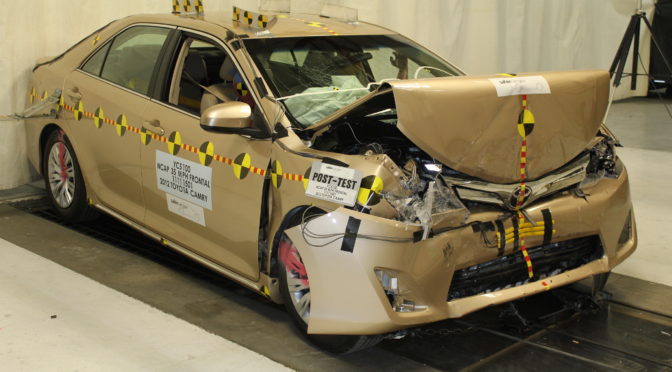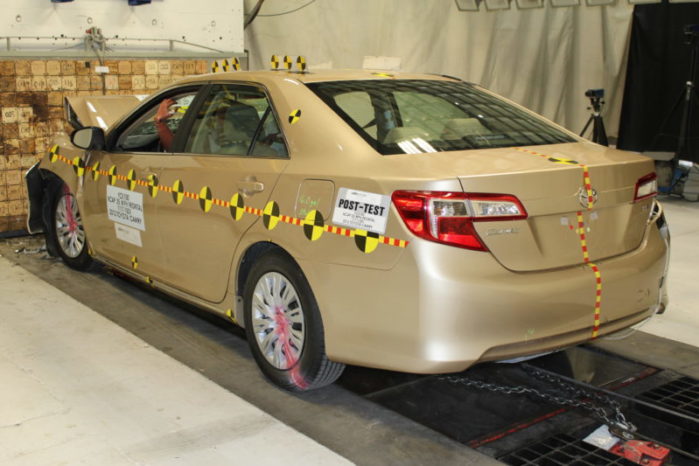
The Toyota Camry and Honda Accord are consistently two of the most popular cars sold today in the United States and Canada, and they continue to be two of the most reliable, safe, and frequently-recommended choices for affordable family vehicles in both countries. But is there a difference between the two sedans when it comes to safety? I decided to peer into the IIHS’ most recent batch of driver death rate data to find out.
Every few years, the IIHS releases a set of calculations on driver death rates for recent model year vehicles sold in the US. The calculations are flawed, as a.) they involve large confidence intervals and b.) don’t factor in two thirds of the key features in auto safety—how we drive and where we drive. But with those limitations, the data are interesting, and can shed light on a number of questions–including whether a Camry is a safer family car than an Accord, or whether the reverse is true.
This is part of an ongoing series digging into the IIHS’ 2017 Status Report (volume 52, number 3); recent articles include The Volt, The Leaf, or The Prius for Safety?, Is a Civic as Safe as an Accord?, Choose the Cruze over the Suburban, and The Outback, Legacy, and Forester Are Equally Safe. Today’s we’ll dig into whether there’s actually a clear safety difference between a recent year Camry and a recent year Accord.
2012-2014 Toyota Camry – 39 driver deaths (29-49)
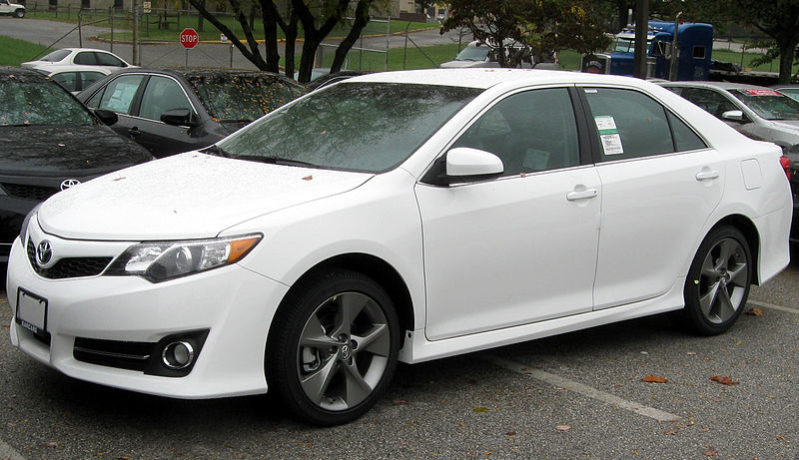 According to the IIHS, the Toyota Camry’s driver death rate between model years 2012 and 2014 was 39, with 23 predicted fatalities occurring from multiple vehicle collisions and 17 from single vehicle crashes, with 6 of those resulting from rollovers. Astute readers may note that 23 and 17 sum to 40, not 39; this is likely due to rounding errors. Remember that the “39” figure doesn’t mean that 39 people died while driving 2012 to 2014 model year Camrys during the surveyed years. Rather, it means that the IIHS looked at NHTSA FARS data on who died driving Camrys of the aforementioned model years between 2012 and 2015, crossed it with IHS data on how many Camrys were registered, and extrapolated the figures with a statistical software package. The “39” is their prediction of how many drivers would die if, say, 1 million drove 1 million of the aforementioned Camrys for a full year throughout the United States. This exposure was based on 2,256,106 registered vehicle years.
According to the IIHS, the Toyota Camry’s driver death rate between model years 2012 and 2014 was 39, with 23 predicted fatalities occurring from multiple vehicle collisions and 17 from single vehicle crashes, with 6 of those resulting from rollovers. Astute readers may note that 23 and 17 sum to 40, not 39; this is likely due to rounding errors. Remember that the “39” figure doesn’t mean that 39 people died while driving 2012 to 2014 model year Camrys during the surveyed years. Rather, it means that the IIHS looked at NHTSA FARS data on who died driving Camrys of the aforementioned model years between 2012 and 2015, crossed it with IHS data on how many Camrys were registered, and extrapolated the figures with a statistical software package. The “39” is their prediction of how many drivers would die if, say, 1 million drove 1 million of the aforementioned Camrys for a full year throughout the United States. This exposure was based on 2,256,106 registered vehicle years.
2013-2014 Honda Accord – 36 driver deaths (22-50)
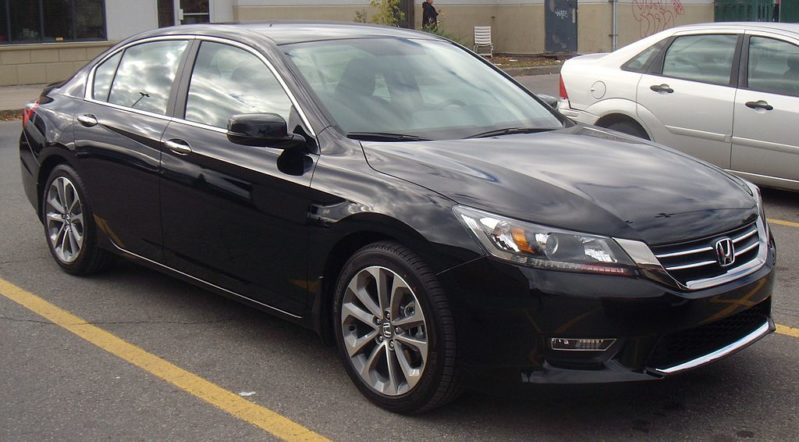 In a statistical tie with the Camry, the 2013-2014 Honda Accord had a driver death rate of 36, with 21 predicted fatalities occurring from multiple vehicle collisions and 16 from single vehicle crashes, with 9 of those resulting from rollovers. As with the Camry, adding multiple- and single-vehicle crash estimates doesn’t equal the combined driver death rate figure; we’ll have to make our peace with this. As with the Camry, the figure roughly means that, per the IIHS’ calculations, if 500,000 drivers drove 500,000 Accords for 2 full years throughout the United States (at typical miles and highway/city driving patterns), we would expect 36 of them to die.The exposure was based on 1.001,344 registered vehicle years.
In a statistical tie with the Camry, the 2013-2014 Honda Accord had a driver death rate of 36, with 21 predicted fatalities occurring from multiple vehicle collisions and 16 from single vehicle crashes, with 9 of those resulting from rollovers. As with the Camry, adding multiple- and single-vehicle crash estimates doesn’t equal the combined driver death rate figure; we’ll have to make our peace with this. As with the Camry, the figure roughly means that, per the IIHS’ calculations, if 500,000 drivers drove 500,000 Accords for 2 full years throughout the United States (at typical miles and highway/city driving patterns), we would expect 36 of them to die.The exposure was based on 1.001,344 registered vehicle years.
Although it’s not a sedan, it’s worth noting that the Accord coupe had a driver death rate of 20 (with all 20 predicted fatalities occurring in multiple-vehicle collisions). It’s also worth noting that, as we established in a previous article in this series, the Accord sedan had a driver death rate statistically indistinguishable from that of the much smaller Civic sedan.
2012-2014 Toyota Camry hybrid – 25 driver deaths (4-46)
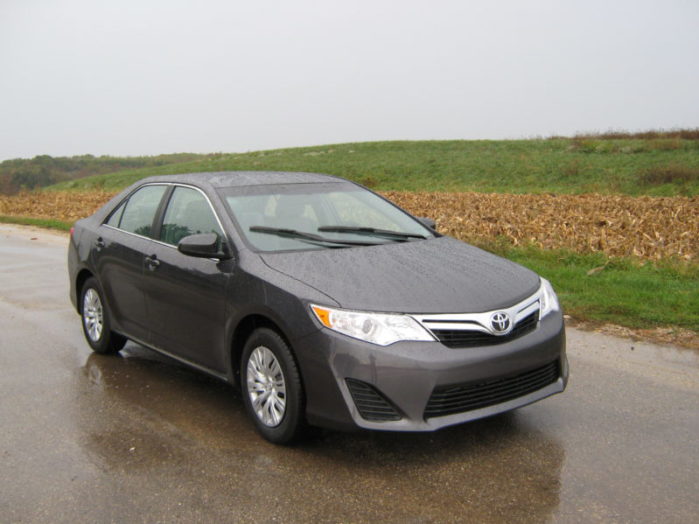 Because the IIHS occasionally publishes driver death rate data for the Camry hybrid, let’s take a look at it too. Per their figures, the 2012-2014 Camry hybrid had a driver death rate of 25, with 22 predicted multiple-vehicle fatalities and 3 single-vehicle fatalities, none of which would occur from rollovers. This figure was based on 262,129 registered vehicle years, and it again suggests that, per the IIHS’ math, if 1 million Camry hybrid drivers drove their vehicles for a full year, we’d expect 25 of them to die in motor vehicle crashes while driving.
Because the IIHS occasionally publishes driver death rate data for the Camry hybrid, let’s take a look at it too. Per their figures, the 2012-2014 Camry hybrid had a driver death rate of 25, with 22 predicted multiple-vehicle fatalities and 3 single-vehicle fatalities, none of which would occur from rollovers. This figure was based on 262,129 registered vehicle years, and it again suggests that, per the IIHS’ math, if 1 million Camry hybrid drivers drove their vehicles for a full year, we’d expect 25 of them to die in motor vehicle crashes while driving.
So was the Camry Hybrid safest, followed by the Accord and regular Camry?
It would appear to be the case, but…it wasn’t.
Statistically speaking, there was no difference between the three vehicles in their abilities to keep their drivers alive. Let’s go into why below.
To put it simply, the confidence bounds of all three vehicles overlapped. The 95% confidence bounds provided an estimate of where we’d find the true driver death rate 95% of the time we took a sample from the car and driver pool (e.g., 1 million drivers driving 1 million Camrys for a year, or 2 million drivers driving 2 million Accords for 6 months). The Camry’s true driver death rate, per the model, would almost always fall between 29 and 49. The Accord’s? Between 22 and 50. The Camry hybrid’s? Between 4 and 46. In other words, there’s a chance (29-49, or 21, out of 4-46, or 43) of 21/43, or 49%, that all three vehicles shared the same true driver death rate. It’s possible the Camry’s rate was truly lowest, or that of the Accord, or that of the Camry hybrid. But we just don’t know, and we can’t statistically prove that one of the three actually had the lowest driver death rate based on the IIHS’ math. Or to put it another way, there’s no way to statistically prove that any differences observed did not occur simply due to chance.
As a footnote, the Accord coupe, with its driver death rate of 20, was also not significantly safer than any of the aforementioned vehicles; it had an exposure of 101,516 registered vehicle years and as a result a very, very wide confidence bound of 2-71. That encompasses all of the aforementioned vehicles and makes it statistically indistinguishable from any of them in safety.
Does this mean that my husband, wife, kids, or family would be equally safe in any kind of Camry or Accord?
Per the IIHS’ math, yes. The truth is that all four vehicles are very safe, as they include the same core safety features (i.e., good frontal and side crash scores, side airbags with head protection, and ESC). While the IIHS only looked at driver data, it’s also likely the vehicles would provide comparable levels of passenger protection as they did for their respective drivers. A modern Camry is a good family vehicle; so is a modern Accord (although I’d recommend the sedan over the coupe since the sedan has far more front-to-back space for Accord car seat installations. If you or your loved ones get to drive any of these vehicles, your survival will have far more to do with how and where you’re driving than on which vehicle you chose–which, statistically speaking, won’t make any difference at all.
What’s the most important thing to remember to keep my family safe in a Camry, Accord, or similar mid-sized sedan?
If you already drive one of these vehicles, or even if you drive something completely different, most of the safety of your loved ones will depend on the degree to which you respect the three following rules: Choose safe speeds, follow best practices with car seats, and choose safe roads. Live these principles and you will raise your family’s chances of both staying out of and surviving car crashes by far more than you will by choosing any vehicle on any car lot in the country.
—
If you find the information on car safety, recommended car seats, and car seat reviews on this car seat blog helpful, you can shop through this Amazon link for any purchases, car seat-related or not. Canadians can shop through this link for Canadian purchases.

